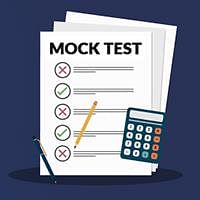CLAT Exam > CLAT Questions > Ancient Badami Chalukya temples were recently...
Start Learning for Free
Ancient Badami Chalukya temples were recently discovered in Mudimanikyam village along the banks of which river?
- a)Godavari River
- b)Kaveri River
- c)Krishna River
- d)Tapi River
Correct answer is option 'C'. Can you explain this answer?
| FREE This question is part of | Download PDF Attempt this Test |
Most Upvoted Answer
Ancient Badami Chalukya temples were recently discovered in Mudimaniky...
Discovery of Ancient Badami Chalukya Temples in Mudimanikyam Village
The recently discovered ancient Badami Chalukya temples in Mudimanikyam village are located along the banks of the Krishna River.
Significance of the Discovery
- The discovery of these temples sheds light on the rich historical and cultural heritage of the region.
- It provides valuable insights into the architectural and religious practices of the Badami Chalukya dynasty.
Importance of Krishna River
- The Krishna River is one of the major rivers in South India, flowing through the states of Maharashtra, Karnataka, and Andhra Pradesh.
- It has been a significant source of water for irrigation, drinking, and industrial purposes in the region.
Connection to CLAT Category
- This discovery is relevant to the CLAT category as it highlights the importance of historical and archaeological knowledge in understanding the cultural landscape of India.
- It showcases the interdisciplinary nature of the legal field, where knowledge of history, geography, and culture can enrich one's understanding of legal issues.
Free Test
FREE
| Start Free Test |
Community Answer
Ancient Badami Chalukya temples were recently discovered in Mudimaniky...
Two Badami Chalukya temples, aged 1,300-1,500 years, and a 1,200-year-old label inscription were discovered in Mudimanikyam village, Telangana near the Krishna River. The Chalukyas ruled the Deccan from the 6th to 12th centuries, comprising the Badami Chalukyas and the sibling dynasties of the Western and Eastern Chalukyas. Pulakesi I founded the dynasty in 550, making Badami the capital. Pulakesi II expanded the empire, defeating Harsha and Vishnukundins, but later lost Vatapi to Pallava Narasimhavarman.
Attention CLAT Students!
To make sure you are not studying endlessly, EduRev has designed CLAT study material, with Structured Courses, Videos, & Test Series. Plus get personalized analysis, doubt solving and improvement plans to achieve a great score in CLAT.

|
Explore Courses for CLAT exam
|

|
Similar CLAT Doubts
Ancient Badami Chalukya temples were recently discovered in Mudimanikyam village along the banks of which river?a)Godavari Riverb)Kaveri Riverc)Krishna Riverd)Tapi RiverCorrect answer is option 'C'. Can you explain this answer?
Question Description
Ancient Badami Chalukya temples were recently discovered in Mudimanikyam village along the banks of which river?a)Godavari Riverb)Kaveri Riverc)Krishna Riverd)Tapi RiverCorrect answer is option 'C'. Can you explain this answer? for CLAT 2024 is part of CLAT preparation. The Question and answers have been prepared according to the CLAT exam syllabus. Information about Ancient Badami Chalukya temples were recently discovered in Mudimanikyam village along the banks of which river?a)Godavari Riverb)Kaveri Riverc)Krishna Riverd)Tapi RiverCorrect answer is option 'C'. Can you explain this answer? covers all topics & solutions for CLAT 2024 Exam. Find important definitions, questions, meanings, examples, exercises and tests below for Ancient Badami Chalukya temples were recently discovered in Mudimanikyam village along the banks of which river?a)Godavari Riverb)Kaveri Riverc)Krishna Riverd)Tapi RiverCorrect answer is option 'C'. Can you explain this answer?.
Ancient Badami Chalukya temples were recently discovered in Mudimanikyam village along the banks of which river?a)Godavari Riverb)Kaveri Riverc)Krishna Riverd)Tapi RiverCorrect answer is option 'C'. Can you explain this answer? for CLAT 2024 is part of CLAT preparation. The Question and answers have been prepared according to the CLAT exam syllabus. Information about Ancient Badami Chalukya temples were recently discovered in Mudimanikyam village along the banks of which river?a)Godavari Riverb)Kaveri Riverc)Krishna Riverd)Tapi RiverCorrect answer is option 'C'. Can you explain this answer? covers all topics & solutions for CLAT 2024 Exam. Find important definitions, questions, meanings, examples, exercises and tests below for Ancient Badami Chalukya temples were recently discovered in Mudimanikyam village along the banks of which river?a)Godavari Riverb)Kaveri Riverc)Krishna Riverd)Tapi RiverCorrect answer is option 'C'. Can you explain this answer?.
Solutions for Ancient Badami Chalukya temples were recently discovered in Mudimanikyam village along the banks of which river?a)Godavari Riverb)Kaveri Riverc)Krishna Riverd)Tapi RiverCorrect answer is option 'C'. Can you explain this answer? in English & in Hindi are available as part of our courses for CLAT.
Download more important topics, notes, lectures and mock test series for CLAT Exam by signing up for free.
Here you can find the meaning of Ancient Badami Chalukya temples were recently discovered in Mudimanikyam village along the banks of which river?a)Godavari Riverb)Kaveri Riverc)Krishna Riverd)Tapi RiverCorrect answer is option 'C'. Can you explain this answer? defined & explained in the simplest way possible. Besides giving the explanation of
Ancient Badami Chalukya temples were recently discovered in Mudimanikyam village along the banks of which river?a)Godavari Riverb)Kaveri Riverc)Krishna Riverd)Tapi RiverCorrect answer is option 'C'. Can you explain this answer?, a detailed solution for Ancient Badami Chalukya temples were recently discovered in Mudimanikyam village along the banks of which river?a)Godavari Riverb)Kaveri Riverc)Krishna Riverd)Tapi RiverCorrect answer is option 'C'. Can you explain this answer? has been provided alongside types of Ancient Badami Chalukya temples were recently discovered in Mudimanikyam village along the banks of which river?a)Godavari Riverb)Kaveri Riverc)Krishna Riverd)Tapi RiverCorrect answer is option 'C'. Can you explain this answer? theory, EduRev gives you an
ample number of questions to practice Ancient Badami Chalukya temples were recently discovered in Mudimanikyam village along the banks of which river?a)Godavari Riverb)Kaveri Riverc)Krishna Riverd)Tapi RiverCorrect answer is option 'C'. Can you explain this answer? tests, examples and also practice CLAT tests.

|
Explore Courses for CLAT exam
|

|
Suggested Free Tests
Signup for Free!
Signup to see your scores go up within 7 days! Learn & Practice with 1000+ FREE Notes, Videos & Tests.
























